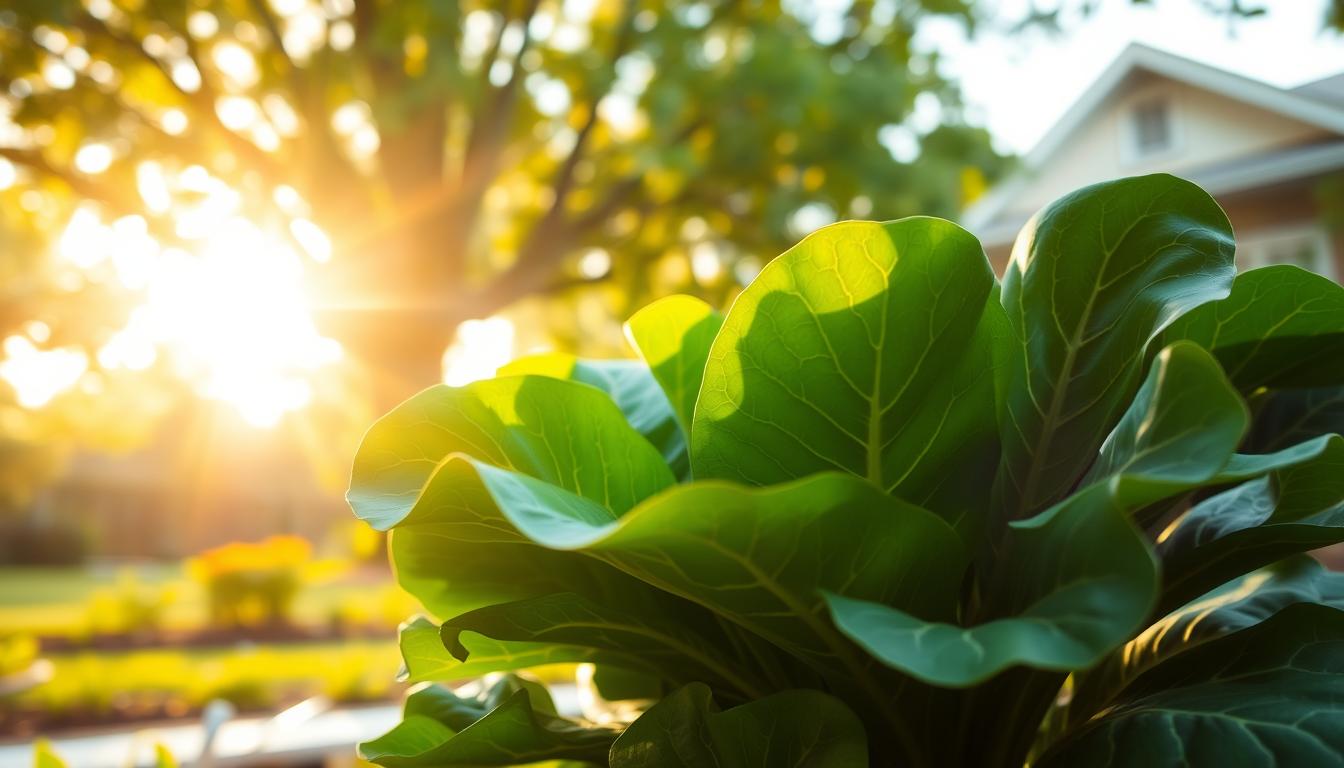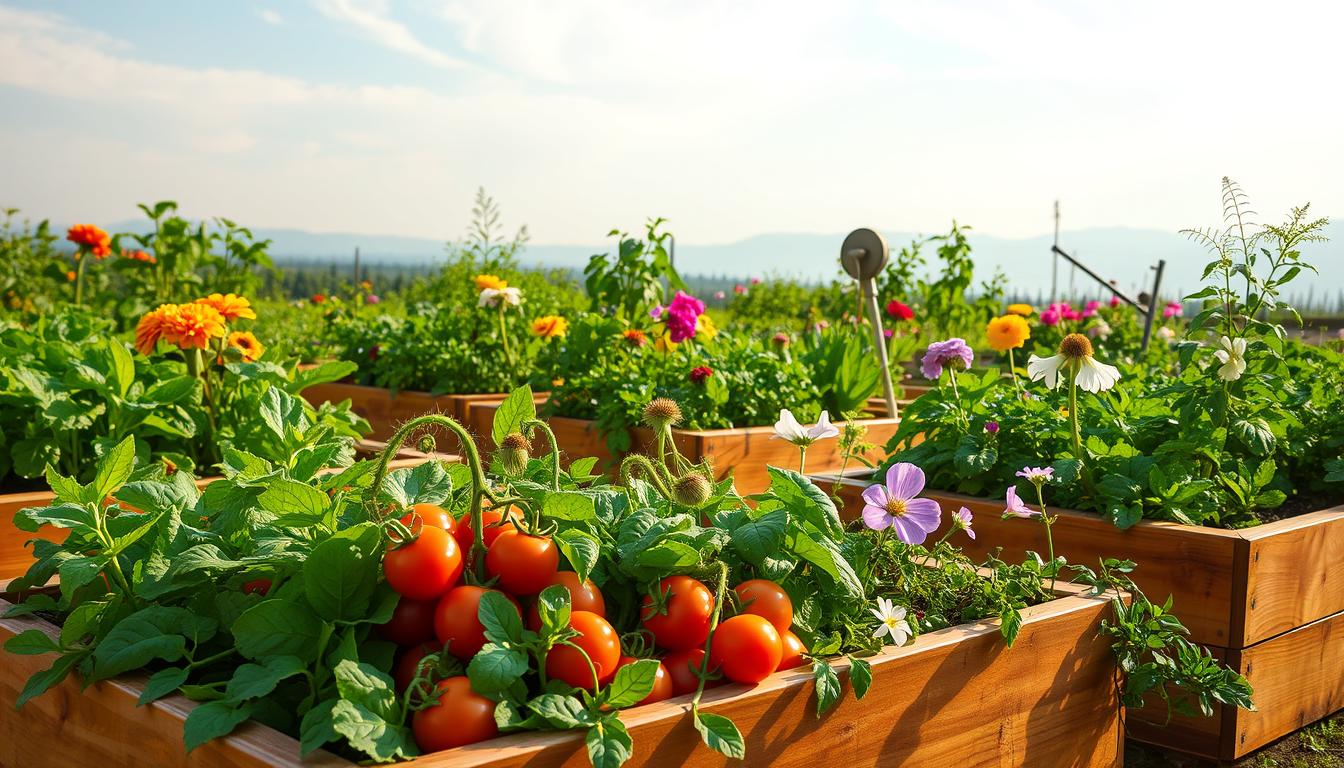How to Grow Collard Greens in Your Backyard: A Step-by-Step Guide
Collard greens are a nutrient-rich leafy vegetable that grows best in cooler temperatures of fall. They belong to the Brassica family, which also includes cabbage, mustard, and broccoli. To successfully grow collard greens, you need fertile, well-draining soil and full sun. They are rich in vitamins A, C, K, and minerals like calcium and iron, making them a great addition to a healthy diet. This guide will teach you how to pick the right variety, prepare your soil, and care for your collard greens plants. Whether you’re an experienced gardener or just starting, you’ll enjoy a bountiful harvest of delicious and nutritious greens. Key Takeaways The Benefits of Growing Your Own Collard Greens Growing collard greens in your garden has many advantages. It’s not just about the taste and health benefits. It also helps you save money. Plus, you can enjoy a steady supply of greens all fall and winter. Nutritional Value of Homegrown Collard Greens Collard greens are full of vitamins A, C, and K, and minerals like calcium and iron. These nutrients are key for strong bones, good eyesight, and a strong immune system. Since you grow them yourself, you get the freshest greens possible. Popular Collard Green Varieties for Home Gardens For home gardens, ‘Georgia Southern’ and ‘Top Bunch’ are top picks. They’re loved for their taste, texture, and how easy they are to grow. ‘Georgia Southern’ has big, tender leaves. ‘Top Bunch’ is known for its compact size and high yield. Cost Savings of Growing vs. Buying Growing your own collard greens can save you a lot of money. It cuts down your grocery bills and lets you enjoy fresh greens without the extra cost. Here are some ways you can save: In summary, growing your own collard greens is a smart choice. It boosts your nutrition and saves you money. It’s a great addition to any garden. Planning Your Collard Green Garden Planning your collard green garden is important for their growth. You need to pick the right time to plant and choose the best companion plants. Also, crop rotation helps keep the soil fertile. Best Seasons to Plant in Different US Regions In the US, the best planting time for collard greens changes by region. They grow best in cooler weather, making fall the best season. In warmer areas, like the South, winter is good. In cooler places, like the Northeast, spring or early fall works best. Companion Plants That Support Collard Greens Onions and garlic help keep pests away from your collard greens. Marigolds keep nematodes at bay. Herbs like dill and cilantro attract good bugs. Crop Rotation Strategies for Healthy Soil Crop rotation keeps the soil healthy and fertile. Plant collard greens in a different spot each season. Follow them with legumes or grains to add nutrients back into the soil. Crop Season Benefit Legumes Spring Nitrogen fixation Grains Summer Soil structure improvement Collard Greens Fall Nutrient utilization Selecting the Ideal Growing Location The success of your collard green crop starts with selecting the ideal growing location. You need to think about several key factors. These factors directly impact your plants’ health and productivity. Sunlight Requirements for Optimal Growth Collard greens need full sun to partial shade to grow well. They should get at least 4-6 hours of direct sunlight each day. Getting the right sunlight is key for their growth. Space Considerations and Plant Spacing Collard green plants need enough space to grow healthily. They should have about 18-24 inches between each plant. This space allows for air circulation and growth. It also reduces disease risk. Protection from Extreme Weather Conditions Collard greens are sensitive to frost and heat stress. To protect them, use row covers or other measures during harsh weather. This keeps your collard greens thriving all season. Gathering Essential Tools and Materials Before you start planting collard greens, it’s crucial to have the necessary tools and materials. This will ensure that you’re well-prepared for a successful harvest. Must-Have Gardening Tools for Success To grow collard greens, you’ll need some basic gardening tools. These include a trowel for planting, a watering can or hose for irrigation, and gloves to protect your hands while gardening. Soil Amendments Specific to Collard Greens Collard greens benefit from fertile, well-draining soil. To achieve this, you can use compost or well-rotted manure to improve soil fertility. Additionally, a balanced fertilizer can provide essential nutrients for healthy plant growth. Organic Pest Control Supplies To manage pests organically, you can use neem oil or insecticidal soap. These products are effective against common pests like aphids and cabbage worms. You can also use row covers to prevent pests from reaching your plants. Tool/Material Purpose Trowel Planting collard greens Compost Improving soil fertility Neem oil … Read more


